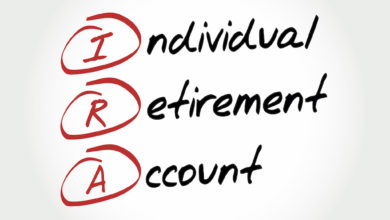Reviewing Your Retirement Plan

The days when companies would provide pensions for their employees are rapidly dwindling. Today, workers are primarily responsible for saving enough money for their retirements.
The good news? Workers can choose from many retirement plans, everything from 401(k) plans to IRAs to Simplified Employee Pensions.
However, no matter what plan your company offers — or whatever you invest in if you are a self-employed worker — your job is to maximize your retirement savings during your working years.
Richard Lichtig, a partner with accounting firm Eisner Amper, recommends that employees take advantage of two investing strategies: dollar cost averaging and maximizing an employer’s matching contribution.
In dollar cost averaging, workers buy a fixed dollar amount of a particular investment on a set schedule, no matter what that investment’s share price happens to be. That gives employees the chance to buy more shares when the price per share of an investment is low and a smaller amount of shares when the price per share is higher.
That reduces the chance that employees will make a substantial purchase when that investment is at its highest points.
Another sound investment technique for employees to consider is to match their employer’s matching contribution to the 401(k) plan.
As Lichtig writes, many employers allow their workers to invest as much as 15 percent of their salary in a 401(k) plans. The employers will then match, say, half of the first 5 percent of what their employees contribute. Employees could cost themselves money by selecting a contribution method that fully funds their 401(k) plans as early as possible.
Lichtig provides an interesting example. He cites an employee with a salary of $330,000 a year who wants to contribute $16,500 to the employer’s 401(k) plan. If the employee contributes is at a 15 percent rate, the employee will have maxed out the $16,500 contribution in April. They would have invested $4,125 (or 15% of their monthly salary) from each paycheck from January through April. The employer will have made $2,750 in matching contributions.
However, if the employee had contributed 5 percent of their monthly salary (or $1,375) to the plan, they would have contributed the same $16,500. However, in this case, the employer would have added matching contributions totaling a much higher $8,250.
Of course, this strategy works best for employees with higher salaries.
In 2021, workers can contribute $19,500 throughout the year in their 401(k) and 403(b) plans. The catch-up contribution limit remains the same at $6,500.
That means workers who save about $1,625 a month — $375 a week — will max out their 401(k) and receive the best possible tax benefits. Those workers who are older than 50 will need to save $2,167 a month or about $500 a week, to receive the entire tax break.
It is essential, too, for workers who directly deposit funds into their 401(k) plans from their paychecks to change their direct deposits to adjust to annual changes in the contribution limit. The key is for workers to ask their employer’s payroll department to remove the maximum contribution from each paycheck.
Obviously, not every worker is going to be able to contribute the maximum each year, so you are far from being alone if you are unable to do so. What is essential, though, is for workers to contribute enough to capture any 401(k) match offered by their companies.
The Institute of Financial Wellness is the first and most comprehensive multi-media network for financial education, resources, and services. In fulfilling our mission to help people “Get There” and live their best life, we deliver the following five unique value propositions:
– The industry’s most engaging, informative, and objective financial education content
– Clarity and confidence to help individuals make informed financial decisions
– Access to the IFW Network of Financial Professionals for everything financial
– Full implementation of effective, custom-tailored solutions for everyone’s unique needs
– Ongoing guidance and support to ensure maximum financial success through every stage of life






